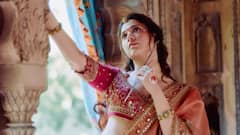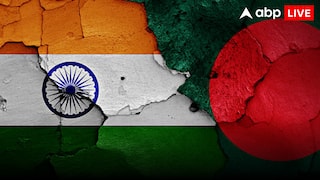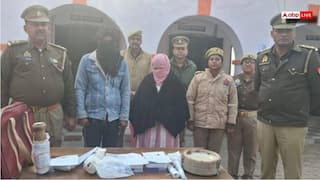Onam 2023: Significance Of Traditional Kasavu Saree Worn During The Festival
The pristine white colour of the saree signifies notions of purity, simplicity, and serenity, while the opulent gold border embodies concepts of affluence and grandeur.

New Delhi: The Kerala saree, also known as the Kasavu saree, is a traditional attire worn during festivals and weddings. Typically hued in white or cream shades, it boasts a distinctive elegance with its ornate gold or zari borders. The pristine white colour of the saree signifies notions of purity, simplicity, and serenity, while the opulent gold border embodies concepts of affluence and grandeur. During the auspicious festival of Onam, women adorn themselves in these customary white and gold sarees to embody these virtues as they worship Lord Vishnu's Vamana Avatar, who is believed to have graced Kerala during this festive period.
About The Kasavu Saree:
The Kasavu saree stands as an integral facet of Kerala's cultural heritage, tracing back through centuries. Historically, the Kasavu threads were made of pure gold, representing prosperity, wealth, and a sense of luxury. However, as gold became more scarce and expensive, artisans began using a combination of gold and copper-coated silver threads, which gave the sarees their signature golden hue while making them more affordable.
While the saree's white colour is believed to represent nature's pure and unspoiled beauty, the golden borders reflect the sun's rays, conjuring images of sun-kissed Kerala landscapes. Together, the saree pays homage to the region's lush greenery and natural bounty.
The Kasavu saree represents unity and equality among Kerala women, transcending differences in age, caste, or religion. Women from all walks of life wear this traditional attire during festivals, bridging gaps and fostering a sense of togetherness.
Crafted from fine silk or cotton, it showcases intricate motifs and patterns. The incorporation of the gold or zari border involves a specialized weaving technique, enhancing the saree's allure and magnetism. However, it is it's very simplicity that makes Kerala saris and handlooms so special.
The Kasavu Saree In Present Times:
In contemporary times, the Kerala saree has garnered popularity not only within Kerala but also across India and globally and a diverse selection of Kerala sarees in varying prices based on material, design, and craftsmanship are found. Notable examples of Kerala sarees available encompass the Kuthampully Sarees, Kerala Kasavu Saree in Tissue Silk, and Kasavu Saree.
The graceful and captivating contrast between the golden borders and the otherwise unembellished white mundum neryathum worn by Keralite women has evolved into a symbol of Malayali femininity.
Time Taken To Make The Kasavu Sarees:
The duration to produce these sarees depends upon their complexity. A plain saree with a border and stripe might take three to five days, while intricate motifs can extend this period. Elaborate motifs, especially on wedding sarees, can entail up to a month of handwoven effort. Correspondingly, the pricing varies from basic cotton sarees available in clusters to those adorned with zari embellishments.






































